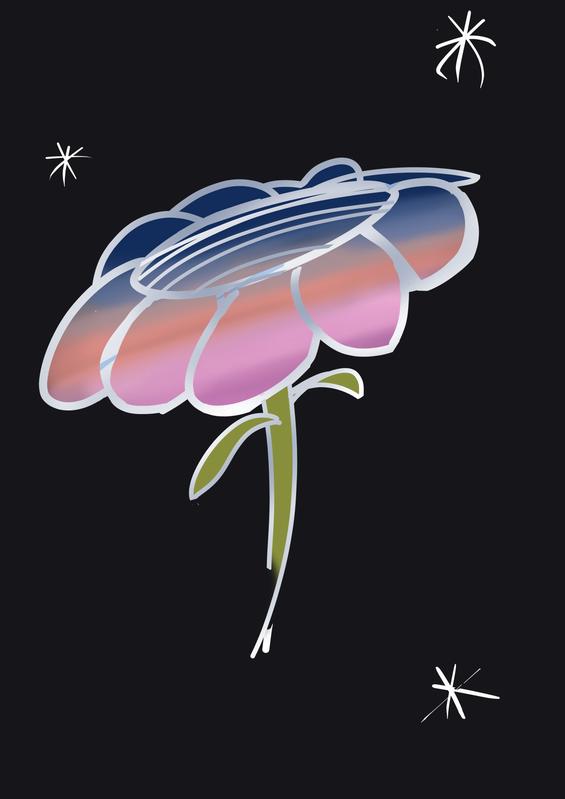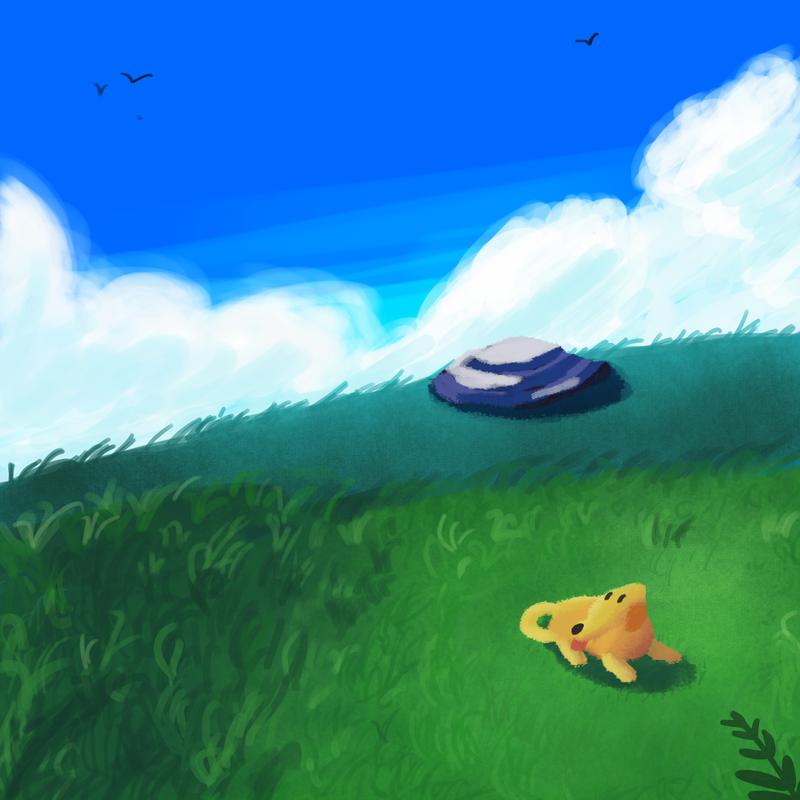Lessons From a Year of Painting
I had a blast spending time creating digital paintings this year!
A couple of years ago, I was overcome with the desire to really learn to draw. I made crude comics as a kid, but I was itching to really figure out how it's done. And so I did, and I learned a lot about art and creativity from it!
This year I turned my focus to the world of color and texture through digital painting. It was quite the leap! From single toned, line driven analog art making in a sketchbook — over to color and shape based painting through a digital medium.
Much of what I have to say this year is a revisiting of ideas I came across last year. Only this time the context has changed. A bit of a variation on a theme!

Changing the Way You See the World
I also love to listen to skaters talk about how they see the world. Skateboarding seems to reconfigure your molecules and changes the way you look and the kind of attention you pay to the world. (Exactly what we hope for when practicing any art.)
Drawing with line art, especially in a stylized way, involves a great deal of abstraction and reduction. I spent time simplifying a form to only a few strokes and basic shapes. It changed how I saw the world. But more in a way of capturing shorthand. I was looking for the simplified essence.
Learning to see color through painting had the exact opposite effect! When I started studying color and light as well as doing direct-painting still lifes, it's as if I was starting to see for the first time.
A pot is just "orange" until you take a closer look at the texture, the lighting, the chips and smudges across its surface. There's a humbling amount of color in everyday life that gets simplified and overlooked.
Miranda and I went to a couple of art museums this year. Paintings are already captivating when you're not an artist. They're then astonishingly rich and awe inspiring once you know the attention to detail that goes into them!
The process of painting is great fun. Though, my favorite takeaway from picking up the craft is now how I see the world. You won't believe how something as simple as looking into someone's eyes will bring out a world of beauty hiding in plain sight!

Balancing Projects with Play
After a few years, I've largely gotten better about balancing play and study. The boundary for me has become really clear since painting has been an entirely new medium requiring lots of study, master copies, and reading up on how the brush engine works.
Even still — When I work on a digital painting project for myself, I'd call it play. But it's not entirely in that category. I realized something was missing.
It wasn't until I picked my physical sketchbook back up and started fooling around that things clicked into place. Unsurprisingly, having an analog, private, free space with no large end goal helped keep my spirit up when I returned to the digital canvas.
I've since deviated from needing a hard boundary, a la the 50% rule. These days my energy level is a good indicator of whether today is painting day or a fool around in the sketch book day.
If I were to package this up into advice: Be mindful of the project driven work, study, and time spent fooling around.
Actually, that lines up nicely with Robertryan Cory's recommended routine for artists from his CalArts lecture: "Educational, Disciplinary, Experimental. Drawing should be divided into a sustainable work routine."

In Pursuit of Truth
In music, the major scale is derived from the harmonic series: a natural occurring phenomena that represents mathematical divisions of any given frequency. (For one of the best demonstrations of this, look no further than the Bernstein Norton Lectures.)
It's a major reason why tonal music is universal. It's what makes music a pursuit of Truth. In Harmonic Experience, W. A. Mathieu walks readers through singing exercises where you experience the balance of these sounds firsthand. It's an eye opening journey.
I'm not as well-read on light as I am acoustics, but I know this much: colors themselves are different wavelengths of light. Violet is a short wavelength, red a long one.
It's one thing to know that intellectually. And a wholly other thing to experience it.
At some point, after working at a still life, spending an hour closely trying to match the color of a dull pot, I stepped outside. It was a clear day, mid afternoon. A rich blue sky, I observed. High in saturation today.
As my gaze came downward, I saw the leaves on the tree. And while it's hard to explain in writing — a resonance occured. I started seeing the green of the leaves as a continuation of the blue in the sky. Not in an intellectual way, but on something much more deep and personal.
In the same way that each tone of music contains a multitude of different sounds, I made the connection that light was working in that same way. Obvious to some, I'm sure, but a revelation to me.
There are plenty of reasons to paint. Maybe one of the most worthwhile, though, is that — just like studying sound — you spend time with another Truth in the world. This time, through color and light.

